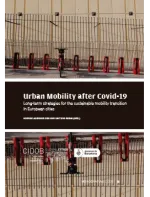Transitioning to sustainable urban mobility in a just and equitable manner: how to prevent environmental gentrification and enhance social equity?

Social conflicts related to gentrification processes are one of the main challenges facing cities around the world. Typically, they affect neighbourhoods that have suffered from historical under-investment and socioeconomic deprivation that later become desirable to medium and high-income groups because of their central location or architectural style. With the influx of capital linked to new medium- and high-income residents, these neighbourhoods are socially, economically, culturally and physically transformed in ways that cater and are more aesthetically attractive to the new residents. The neighbourhoods are equipped with new cultural and environmental amenities (such as new parks and pedestrianised streets or low-traffic neighbourhoods), new (luxury) housing, new forms of commerce and even new healthcare facilities (Cole et al., 2021), which may accompany and trigger gentrification. Historically, the impacts of gentrification have caused much controversy, but recent research overwhelmingly demonstrates that it increases segregation within neighbourhoods (Cole et al., 2021).
Margarita Triguero-Mas, Affiliated Research Scientist, Mariana Arcaya’s Research Group, Department of Urban Studies and Planning, Massachusetts Institute of Technology & Associated Researcher, Barcelona Lab for Urban Environmental Justice and Sustainability, Institute for Environmental Science and Technology (ICTA), Universitat Autònoma de Barcelona and Hospital del Mar Medical Research Institute (IMIM).